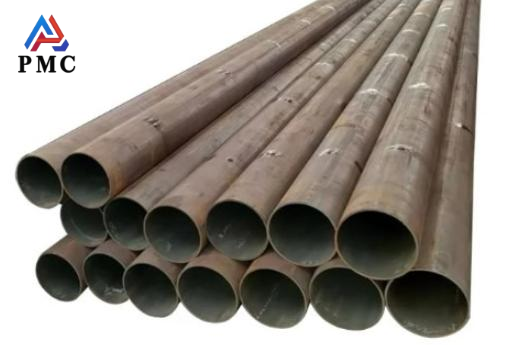
Factors affecting the Service Life of Carbon Steel Pipes
As the "universal blood" of the industrial field, the service life of carbon steel pipes is directly related to the operating efficiency and safety cost of equipment. The following analyzes the core influencing factors from the dimensions of materials, environment, working conditions, etc., and provides targeted solutions.
Material selection: Innate genes determine the upper limit of lifespan
1. Difference in steel grade
Q235B: Ordinary carbon steel, poor corrosion resistance, lifespan is usually 5-8 years (normal dry environment).
Q345B: Low alloy steel, strength increased by 30%, atmospheric corrosion resistance enhanced.
Weathering steel (such as Q355NH): Adding alloy elements such as copper and nickel, the outdoor lifespan can reach more than 15 years.
2. Heat treatment process
Normalizing treatment can refine the grains and improve fatigue resistance; quenching and tempering treatment balances strength and toughness, making it suitable for high-pressure scenarios.
The quenching and tempering treatment is a combination of quenching and high temperature tempering, which can achieve a good balance between the strength and toughness of the steel pipe and achieve better overall performance.

Corrosive environment
1. Chemical media erosion
Acidic environment (such as sulfuric acid, hydrochloric acid): causes uniform corrosion, and the annual loss rate can reach 0.5-2mm.
Chloride ion environment (ocean, salt spray): induces pitting corrosion, and the risk of perforation is high.
Alkaline environment: The corrosion rate is low, but it is easy to cause stress corrosion cracking.
2. Electrochemical corrosion
Contact between dissimilar metals (such as carbon steel and stainless steel) forms micro-batteries, which accelerate anode corrosion.
3. Microbiologically Influenced Corrosion
Sulfate-reducing bacteria multiply in an oxygen-deficient environment, causing localized ulcer-like corrosion. These corrosion areas will gradually expand, seriously affecting the structural strength and service life of the pipeline.
Working conditions: fatal injury of overload operation
1. Extreme pressure and temperature
Long-term overpressure operation (> 1.2 times the nominal pressure) causes plastic deformation of the pipe; high temperature (> 350℃) accelerates the shedding of oxide scale and forms groove corrosion.
2. Fluid erosion wear
High-speed media (such as steam, liquid containing particles) scour elbows and valves, causing wall thickness to decrease, and the wear rate can reach 0.1-0.3mm/year.
Installation and maintenance: the life-saving rule of acquired maintenance
1. Welding defects
Defects such as incomplete penetration and slag inclusions are easy to become the starting point of corrosion and need to be 100% inspected by ultrasonic testing.
2. Damage to the anti-corrosion layer
Insufficient thickness of the galvanized layer (<85μm) or pinhole defects in the epoxy coating lead to local rust.
3. Delayed maintenance
Failure to regularly inspect the wall thickness (recommended once every 2 years) will miss the best time for repair.
Environmental stress and external mechanical damage
Soil stress
Uneven settlement leads to concentrated bending stress in pipes, shortening fatigue life by more than 50%.
Thermal expansion and contraction
When the temperature difference exceeds 50℃, failure to install expansion joints can easily lead to interface leakage.
Construction damage: Hoisting collisions cause dents, which become a source of corrosion.
Third-party damage: Excavation operations cause pipe perforations, and the cost of repair accounts for 30% of the total loss.
Comprehensive solutions to extend life
Material upgrade: choose weathering steel or stainless steel lined composite pipe.
Anti-corrosion reinforcement: use 3PE coating (thickness ≥ 2.5mm) + cathodic protection.
Intelligent monitoring: install online corrosion sensors for real-time warning.
Flexible design: add wear-resistant bushings at elbows to reduce erosion losses.
The life of carbon steel pipes is the result of the game between material properties, environmental erosion and operation and maintenance management. Through precise material selection, scientific anti-corrosion and active maintenance, the service life can be increased from the industry average of 8-10 years to 15-20 years, achieving the best cost of the whole life cycle.
Read more: How to Store Carbon Steel Tubes?


